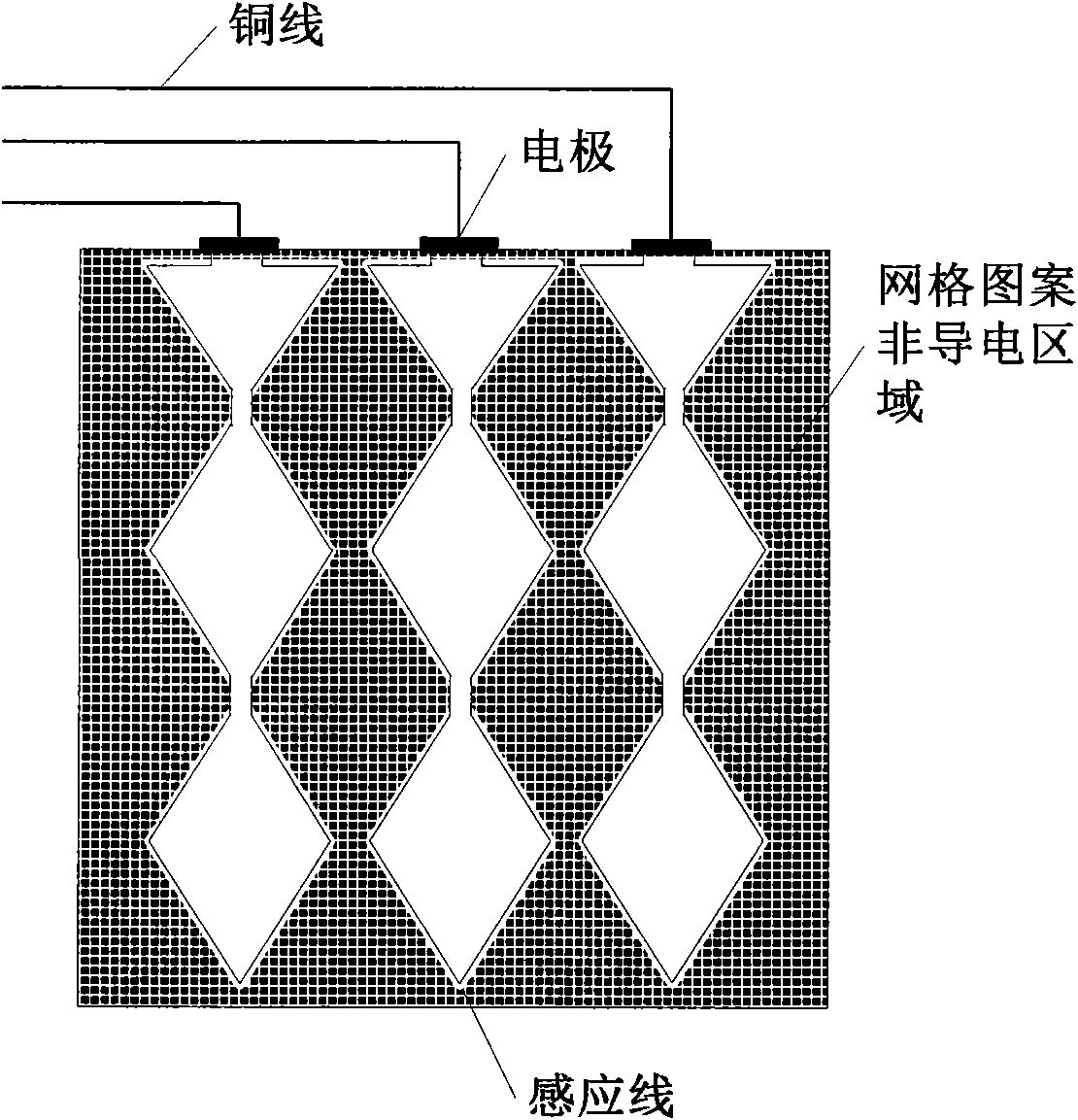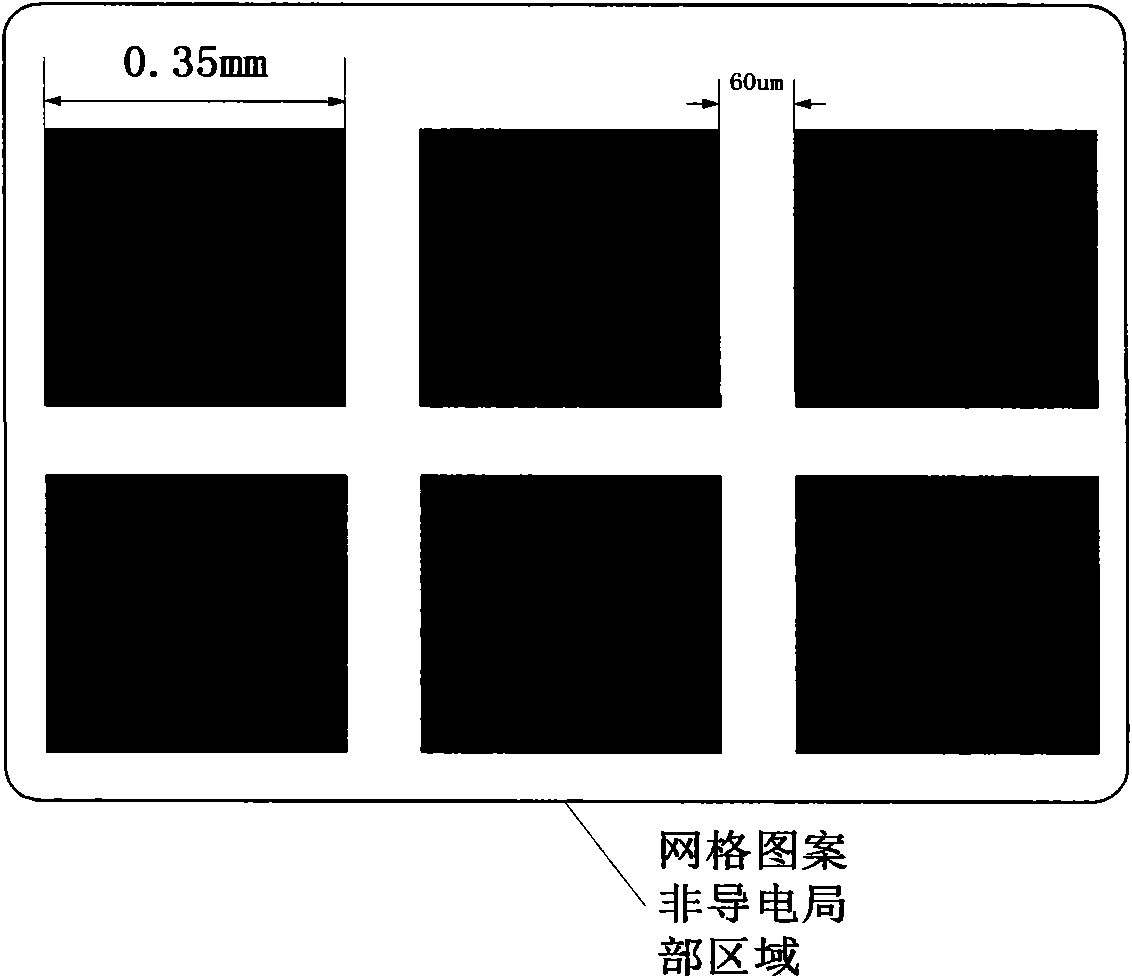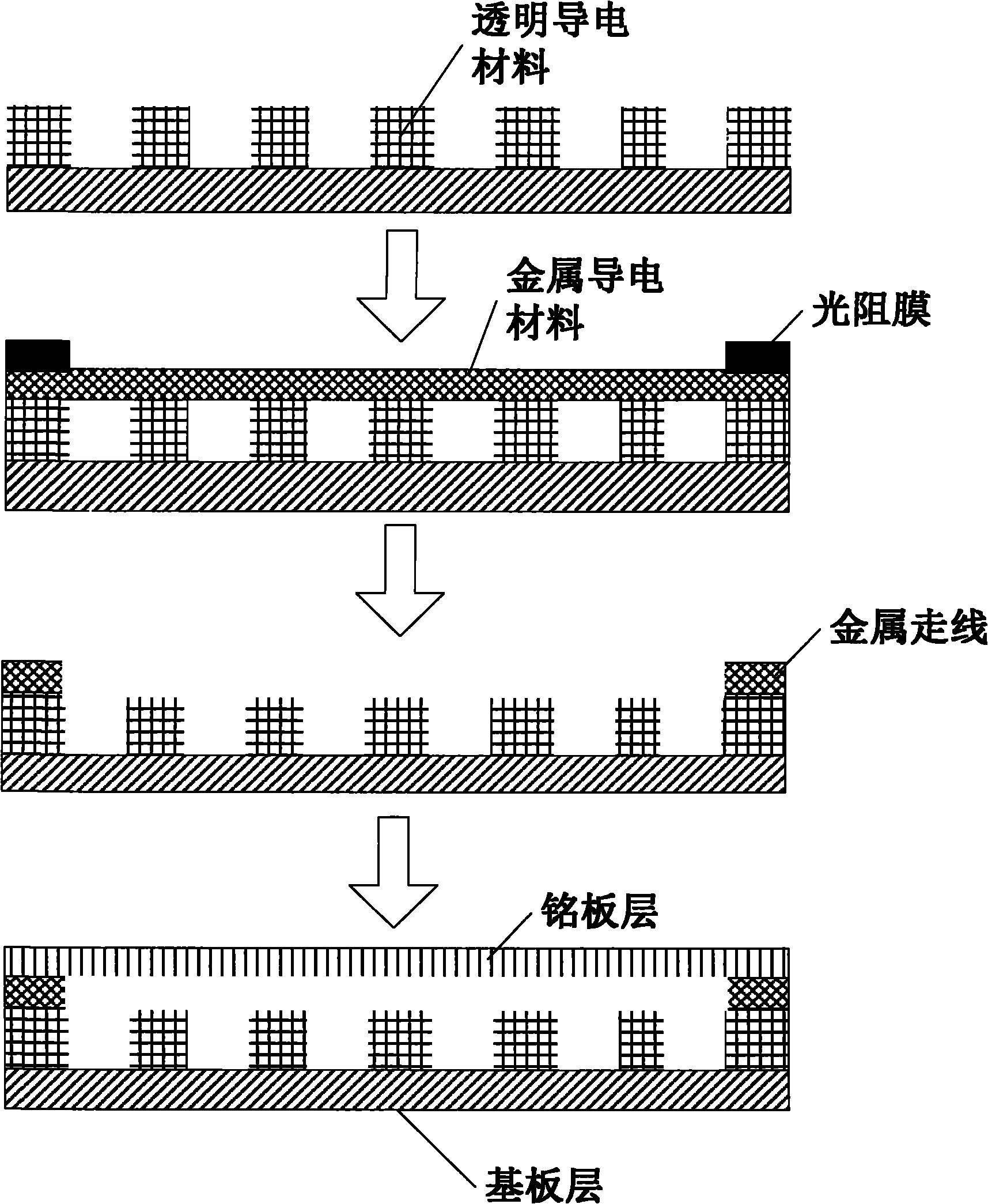Method for manufacturing grid-pattern touch panel
A touch panel and grid manufacturing technology, applied in the input/output process of data processing, instruments, electrical and digital data processing, etc., can solve the problem of increasing the thickness and weight of the touch panel, inaccurate fit and alignment, and environmental pollution. and other problems, to achieve the effect of improving light transmittance and touch sensitivity, reducing thickness and weight, and reducing etching waste liquid
- Summary
- Abstract
- Description
- Claims
- Application Information
AI Technical Summary
Problems solved by technology
Method used
Image
Examples
Embodiment 1
[0025] The thickness of the nameplate layer is 0.7 mm; the thickness of the metal conductive material is 0.04 microns; the thickness of the transparent conductive material is 0.045 mm; the thickness of the substrate layer is 50 microns, and the substrate layer is polycarbonate resin.
[0026] A method for manufacturing a grid-patterned touch panel, comprising the following steps carried out under dust-free and dry conditions;
[0027] Step 1: Aging crystallization of transparent conductive materials;
[0028] Step 2: Expose and etch the aging crystalline transparent conductive material, etch the transparent conductive material with hydrochloric acid at a temperature of 40 degrees Celsius to form a non-conductive area of induction lines and grid patterns;
[0029] Step 3: In step 2, the surface of the transparent conductive material is electroplated with a metal conductive material;
[0030] Step 4: paste a photoresist film on the metal conductive material, expose, develop a...
Embodiment 2
[0034] The thickness of the nameplate layer is 1.8 mm; the thickness of the metal conductive material is 0.1 micron; the thickness of the transparent conductive material is 0.1 micron; the thickness of the substrate layer is 180 micron, and the substrate layer is hardened glass.
[0035] A method for manufacturing a grid-patterned touch panel, comprising the following steps carried out under dust-free and dry conditions;
[0036] Step 1: Aging crystallization of transparent conductive materials;
[0037] Step 2: Expose and etch the aging crystalline transparent conductive material, etch the transparent conductive material with hydrochloric acid at a temperature of 40 degrees Celsius to form a non-conductive area of induction lines and grid patterns;
[0038] Step 3: In step 2, the surface of the transparent conductive material is electroplated with a metal conductive material;
[0039] Step 4: paste a photoresist film on the metal conductive material, expose, develop and et...
Embodiment 3
[0043] The thickness of the nameplate layer is 1.1 mm; the thickness of the metal conductive material is 0.08 microns; the thickness of the transparent conductive material is 0.07 microns; the thickness of the substrate layer is 125 microns, and the substrate layer is polycarbonate resin.
[0044] A method for manufacturing a grid-patterned touch panel, comprising the following steps carried out under dust-free and dry conditions;
[0045] Step 1: Aging crystallization of transparent conductive materials;
[0046] Step 2: Expose and etch the aging crystalline transparent conductive material, etch the transparent conductive material with hydrochloric acid at a temperature of 40 degrees Celsius to form a non-conductive area of induction lines and grid patterns;
[0047] Step 3: In step 2, the surface of the transparent conductive material is electroplated with a metal conductive material;
[0048] Step 4: paste a photoresist film on the metal conductive material, expose, deve...
PUM
| Property | Measurement | Unit |
|---|---|---|
| thickness | aaaaa | aaaaa |
| thickness | aaaaa | aaaaa |
| thickness | aaaaa | aaaaa |
Abstract
Description
Claims
Application Information
 Login to View More
Login to View More - R&D
- Intellectual Property
- Life Sciences
- Materials
- Tech Scout
- Unparalleled Data Quality
- Higher Quality Content
- 60% Fewer Hallucinations
Browse by: Latest US Patents, China's latest patents, Technical Efficacy Thesaurus, Application Domain, Technology Topic, Popular Technical Reports.
© 2025 PatSnap. All rights reserved.Legal|Privacy policy|Modern Slavery Act Transparency Statement|Sitemap|About US| Contact US: help@patsnap.com



